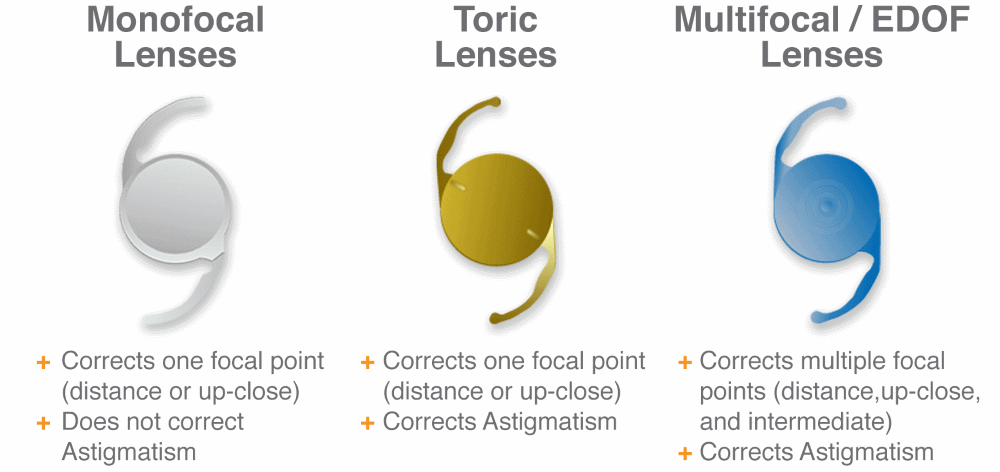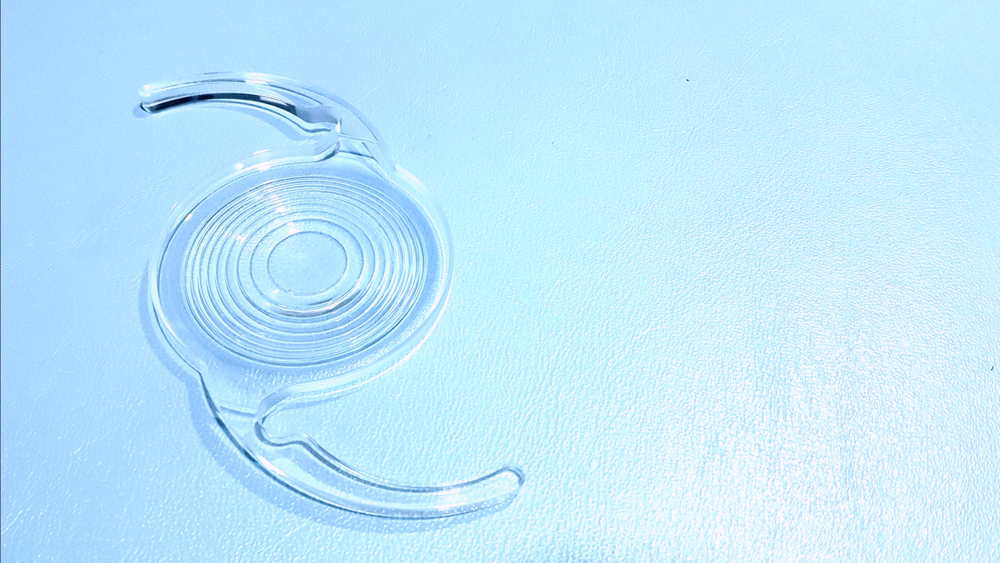
Cataract, Prima Medical Center Saigon
Should I Have Cataract Surgery?
21 February, 2024
Prima Saigon Eye Hospital: Cataracts will not cause large vision changes for some people. A cataract at the outer edge of your lens, for example, may hardly affect your vision. A cataract at the center of your lens, may greatly affect your sight.

Prima Saigon: multifocal lenses helps patients to see near-range (reading), mid-range (computer vision) and long-range clearly
You should only agree to have surgery when you are unable to do all the things you want to do while wearing your glasses. If you decide to have surgery, you and your eye doctor (for cataract surgery, this will be an ophthalmologist or eye MD), must work together as a team.
An ophthalmologist is a medical doctor who specializes in diseases of the eye. He or she has been trained as an eye surgeon to perform cataract surgery. You and your eye doctor will determine the best treatment for you—the one you are most comfortable with and the one he or she is best at performing. As you read this guide, note any questions or concerns you may have and discuss them with your eye doctor.
Note: If a cataract keeps an eye doctor from viewing the inside of your eye, he or she may suggest surgery. Your eye doctor needs to be able to view the inside of your eye to check for eye diseases such as glaucoma and problems of the retina (the innermost part of the eye containing lightsensitive nerve cells).
Types of Cataract Removal
During the cataract operation, your surgeon will first remove the clouded lens. (If you are able to have a lens implant, your doctor will perform this procedure right after removing your cataract lens.) There are three methods for removing the clouded lens:
Phacoemulsification
The most common procedure, phacoemulsification requires a smaller incision in the cornea or, less commonly, the sclera. The surgeon uses sound waves (an ultrasonic device) to break the lens into small pieces, and then suctions the tiny pieces out through the same incision.Next, the doctor will insert the lens into place. Again, the capsular bag will remain to strengthen the eye and to preserve normal architecture.
Most IOLs are foldable, so they can be inserted through the same small incision.
The lens usually unfolds slowly once it is placed into the capsular bag. The incision can be closed with either one stitch, or usually none at all.

Prima Saigon Eye Hospital: different IOL types
Phacoemulsification, with its smaller incision, offers the fastest healing and recovery time, produces little discomfort, and reduces the chance of uneven focus (astigmatism) or distorted vision.
Extracapsular and Intracapsular
These procedures are not often used. An extracapsular cataract extraction may be needed if your lens is too hard to phacoemalsify. The extracapsular procedure removes only the inside of the lens but leaves the capsular bag that holds the lens in place. Leaving the capsular bag adds to the structural strength of the eye and promotes easier healing. During the intracapsular procedure, your eye surgeon removes the lens and the entire capsular bag that holds it.
Your doctor will make an incision in the sclera, use a special tool to freeze the lens, and then remove it through the incision. He or she may then implant the IOL in front of the iris where its loops hold it in place. Another option is to suture the IOL to the wall of the eye. This latter option enables the IOL to be placed behind the iris.
Intraocular Lenses
Intraocular lenses (IOLs) replace your cataract, or cloudy lens. If you have certain eye diseases or problems which prevent safe placement of an IOL, you will need either contact lenses or cataract glasses in order to see clearly after surgery. IOLs are the most popular choice for replacing lenses with cataracts. Unlike contact lenses, these lenses are implanted inside the eye and are meant to be permanent and they do not require replacement or cleaning.
Cataract-IOL-lens
The eye surgeon @ Prima Saigon Eye Hospital implants the IOL in about the same place as your natural lens, so that it results in the most natural vision. IOLs are the best option to replace your own lenses. However if you have certain other eye diseases or problems, you may not be able to have lens implants. You and your eye doctor will need to discuss whether any restrictions apply.

Prima Saigon Eye Hospita: Currently, there are special “multifocal” IOLs that enable you to see well not only for distance vision but also possibly for reading vision
In order to put in an IOL that exactly fits your eye, your eye doctor will measure the length of your eye before your surgery using a painless sound wave (ultrasound) test to determine what strength you will need for your IOL. Our eye surgeon Prima Saigon Eye Hospital will also check the health of your retina and cornea and give you an estimate of the level of vision you can expect after surgery.
The IOL may correct nearsightedness or farsightedness so that you may see well without glasses for distance vision. However, after standard IOL implantation, you will still need glasses to read clearly. Currently, there are special “multifocal” IOLs that enable you to see well not only for distance vision but also possibly for reading vision. You and our doctor @
Prima Saigon Eye Hospital will need to discuss whether this is an option for you.
Dr AN Trinh, Head of General Ophthalmology
If you need an eye assessment, please have a visit to Prima Saigon Eye Hospital
- Address: 27 Ky Dong St, District 3, HCMC
- Website: https://primahealth.vn/en/
- Business Hours: 07:30 – 17:00 from Monday – Saturday
- HOTLINE: 0919-209-039 or 1900 – 9115
Prima Saigon Eye Hospital recommends that clients should reserve their intended consultation at least three days before their visit for convenience and less waiting time.
Prima Saigon Eye Hospital: Cataracts will not cause large vision changes for some people. A cataract at the outer edge of your lens, for example, may hardly affect your vision. A cataract at the center of your lens, may greatly affect your sight.

Prima Saigon: multifocal lenses helps patients to see near-range (reading), mid-range (computer vision) and long-range clearly
You should only agree to have surgery when you are unable to do all the things you want to do while wearing your glasses. If you decide to have surgery, you and your eye doctor (for cataract surgery, this will be an ophthalmologist or eye MD), must work together as a team.
An ophthalmologist is a medical doctor who specializes in diseases of the eye. He or she has been trained as an eye surgeon to perform cataract surgery. You and your eye doctor will determine the best treatment for you—the one you are most comfortable with and the one he or she is best at performing. As you read this guide, note any questions or concerns you may have and discuss them with your eye doctor.
Note: If a cataract keeps an eye doctor from viewing the inside of your eye, he or she may suggest surgery. Your eye doctor needs to be able to view the inside of your eye to check for eye diseases such as glaucoma and problems of the retina (the innermost part of the eye containing lightsensitive nerve cells).
Types of Cataract Removal
During the cataract operation, your surgeon will first remove the clouded lens. (If you are able to have a lens implant, your doctor will perform this procedure right after removing your cataract lens.) There are three methods for removing the clouded lens:
Phacoemulsification
The most common procedure, phacoemulsification requires a smaller incision in the cornea or, less commonly, the sclera. The surgeon uses sound waves (an ultrasonic device) to break the lens into small pieces, and then suctions the tiny pieces out through the same incision.Next, the doctor will insert the lens into place. Again, the capsular bag will remain to strengthen the eye and to preserve normal architecture.
Most IOLs are foldable, so they can be inserted through the same small incision.
The lens usually unfolds slowly once it is placed into the capsular bag. The incision can be closed with either one stitch, or usually none at all.

Prima Saigon Eye Hospital: different IOL types
Phacoemulsification, with its smaller incision, offers the fastest healing and recovery time, produces little discomfort, and reduces the chance of uneven focus (astigmatism) or distorted vision.
Extracapsular and Intracapsular
These procedures are not often used. An extracapsular cataract extraction may be needed if your lens is too hard to phacoemalsify. The extracapsular procedure removes only the inside of the lens but leaves the capsular bag that holds the lens in place. Leaving the capsular bag adds to the structural strength of the eye and promotes easier healing. During the intracapsular procedure, your eye surgeon removes the lens and the entire capsular bag that holds it.
Your doctor will make an incision in the sclera, use a special tool to freeze the lens, and then remove it through the incision. He or she may then implant the IOL in front of the iris where its loops hold it in place. Another option is to suture the IOL to the wall of the eye. This latter option enables the IOL to be placed behind the iris.
Intraocular Lenses
Intraocular lenses (IOLs) replace your cataract, or cloudy lens. If you have certain eye diseases or problems which prevent safe placement of an IOL, you will need either contact lenses or cataract glasses in order to see clearly after surgery. IOLs are the most popular choice for replacing lenses with cataracts. Unlike contact lenses, these lenses are implanted inside the eye and are meant to be permanent and they do not require replacement or cleaning.
Cataract-IOL-lens
The eye surgeon @ Prima Saigon Eye Hospital implants the IOL in about the same place as your natural lens, so that it results in the most natural vision. IOLs are the best option to replace your own lenses. However if you have certain other eye diseases or problems, you may not be able to have lens implants. You and your eye doctor will need to discuss whether any restrictions apply.

Prima Saigon Eye Hospita: Currently, there are special “multifocal” IOLs that enable you to see well not only for distance vision but also possibly for reading vision
In order to put in an IOL that exactly fits your eye, your eye doctor will measure the length of your eye before your surgery using a painless sound wave (ultrasound) test to determine what strength you will need for your IOL. Our eye surgeon Prima Saigon Eye Hospital will also check the health of your retina and cornea and give you an estimate of the level of vision you can expect after surgery.
The IOL may correct nearsightedness or farsightedness so that you may see well without glasses for distance vision. However, after standard IOL implantation, you will still need glasses to read clearly. Currently, there are special “multifocal” IOLs that enable you to see well not only for distance vision but also possibly for reading vision. You and our doctor @
Prima Saigon Eye Hospital will need to discuss whether this is an option for you.
Dr AN Trinh, Head of General Ophthalmology
If you need an eye assessment, please have a visit to Prima Saigon Eye Hospital
- Address: 27 Ky Dong St, District 3, HCMC
- Website: https://primahealth.vn/en/
- Business Hours: 07:30 – 17:00 from Monday – Saturday
- HOTLINE: 0919-209-039 or 1900 – 9115
Prima Saigon Eye Hospital recommends that clients should reserve their intended consultation at least three days before their visit for convenience and less waiting time.



